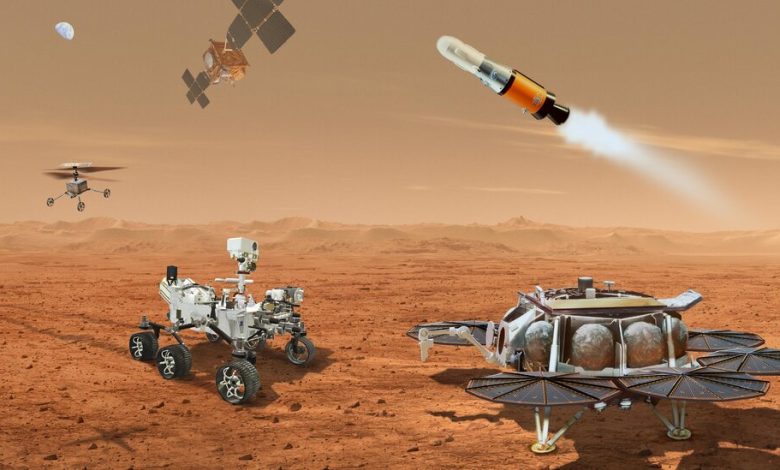NASA Searching for New Ideas for Its Mars Rocks Return Mission

The cost of a proposed NASA mission to gather rocks on Mars and return them to Earth is spiraling upward and slipping further into the future. So on Monday, space agency officials asked for ideas on simplifying the mission and trimming its price tag.
“The bottom line is that $11 billion is too expensive,” Bill Nelson, the NASA administrator, said during a news conference on Monday. “And not returning samples until 2040 is unacceptably too long.”
The mission, known as Mars Sample Return, is central to the search for signs that life may have existed on the red planet. The idea is to bring samples of rock and soil back to Earth so that scientists can prod and poke at them using their most sophisticated tools.
NASA had hoped that Mars Sample Return would cost $5 billion to $7 billion, and that the rocks would arrive on Earth in 2033.
But last fall, a panel that reviewed the mission concluded that the cost was likely to be much higher, from $8 to $11 billion. NASA officials said on Monday that after they looked over the review, they agreed with that cost estimate, and that, given budget constraints, the current Mars Sample Return mission would not be able to deliver the rocks before 2040.
On Tuesday, NASA plans to issue a “request for information” seeking alternative plans from aerospace companies as well as experts within NASA, with proposals to be due on May 17. Of those, NASA would finance several of the proposals, with studies finishing later this year. Then NASA would have to decide its next step.
